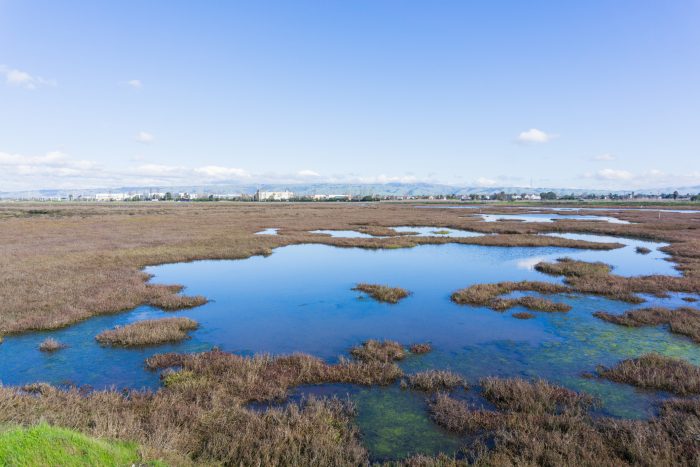$479 Billion: That’s What It Will Cost if Earth Loses These 6 Natural Processes

By failing to protect the earth, the earth is failing to protect us, it appears.
As the climate continues to change rapidly, key ecosystem services are diminishing, and the numbers are showing for it.
In addition to food production, the extraction of natural oil and land utilization for crop development, the economy relies on the earth’s natural processes and protective services in many more ways than meets the eye.
By The Numbers
- According to a report titled ‘Global Futures’ by the World Wildlife Fund, if natural processes continue to be destroyed at the pace they currently are, within the next 30 years the global economy will have to make up for $479 billion in losses.
- Producing the second highest amount of carbon emissions, following China, the United States is positioned to lose the most of any nation at an estimated $83 billion per year by 2050.
A lack of regard for sustainability will affect virtually every industry, ultimately causing the price of everyday goods and services to skyrocket.
The World Wildlife Fund report shows that the estimated number of losses doesn’t include environmental ‘tipping points’ and/or natural disasters that have catastrophic financial and human impacts.
In order to understand the value that ecosystem services bring to everyday life and why their depletion could ultimately devastate the world’s economy, defining ecosystem services and how they serve us is important.
The six most economically important eco-services are:
1. Pollination
Pollination is the act of transferring pollen grains from the male anther of a flower to the female stigma in order to create offspring.
Pollination is the duty of many different bird and insect species, including bees. Bees and other insects that are essential to the pollination process are dying at an alarming rate, and therefore crops that are important to commercial production are costing the food industry hundreds of billions of dollars.
2. Coastal Protection
In the last three decades, almost half of the world’s corals have been destroyed. coral reefs serve as home to millions of sea creatures, preserve coastal sediments, absorb wave energy, and regulate flooding.
The less protection the coasts have, the more risks that are posed to coastal infrastructure. According to the National Ocean Services, in 2010 there were 123.3 million Americans living in counties directly on the coastline; that number was projected to increase to 210 million by this year, as the population and size of cities continue to expand.
3. Water Yield
Water yields are forms of vegetation or habitats that absorb, redirect or rely on water sources such as forests and wetlands. Without them, flooding risk increases and drinking water sources could be compromised.
4. Timber production
Since 2010, almost 30 million acres of rain forest have been lost each year due to deforestation, much of it for the purposes of cattle ranching, revealing a major connection between deforestation and meat production. With deforestation comes the loss of viable wood for timber production.
Decreased timber production for commercial and constructive uses could ultimately leading to price hikes for industries that operate with lumber.
5. Fish Production
As the world’s coral reefs are destroyed, the species that call them home cannot survive. A dramatic shift in marine conservatory efforts could save the United States GDP $57.3 billion a year just on fishing industry revenue.
According to the WWF report, losses of marine fisheries combined with lack of coastal protection result in the highest losses. Restoring their sustainability could dramatically shift conservation efforts and increase the GDP by $11 billion.
6. Carbon Sequestration
Carbon sequestration refers to the storage and absorption of carbon.
Without trees and other carbon storing habitats, the amount of greenhouse gasses in the atmosphere increases, ultimately catalyzing global warming.
In 2017, the United States emitted 13.5% of the world’s fossil fuels, and China emitted 29%.
The Cost to Replace the Natural Process
There may not be any way, no matter the funds put forth, to replace what climate change has taken.
However, businesses can surely shift their focus to sustainability by making sure their supply chains do not have their hand in these ecosystem service losses.
If they don’t, and the world population continues to take it’s natural processes for granted, the cost to make up for them with man-made processes will be worth at least as much as the environmental losses; $479 billion a year.
“Economic and financial sector policies need to provide much stronger incentives for the private sector to take account of nature’s value in their decision-making. Clear long-term science-based targets are needed for business, and strong legal and regulatory frameworks are needed to hold businesses to account for meeting them and for mitigating, compensating for and/or offsetting their impacts,” the report stated.
In 2015, the United Nations created the Agenda for Sustainable Development, which “provides a shared blueprint for peace and prosperity for people and the planet, now and into the future”. The 17 goals on the agenda outline the goals that need to be met in order to improve the quality of life for all global citizens by 2030. The goals include ending poverty, improving health and education and growing the economy, all while attempting to reverse climate change and protect the oceans and forests.
But what exactly will that cost?
Marine Policy published a study which stated that meeting the Sustainable Development Goals will cost the global economy approximately $175 billion per year, with half of those funds going towards cleaning up the world’s oceans.
In a variation of one U.S. president’s famous words, ask not what your environment can do for you, but what you can do for your environment; we could quite literally save the planet. &










